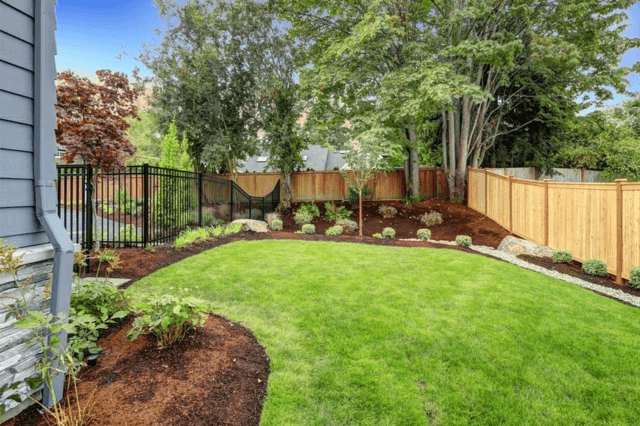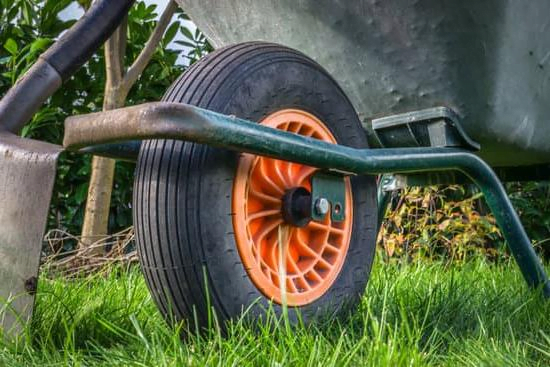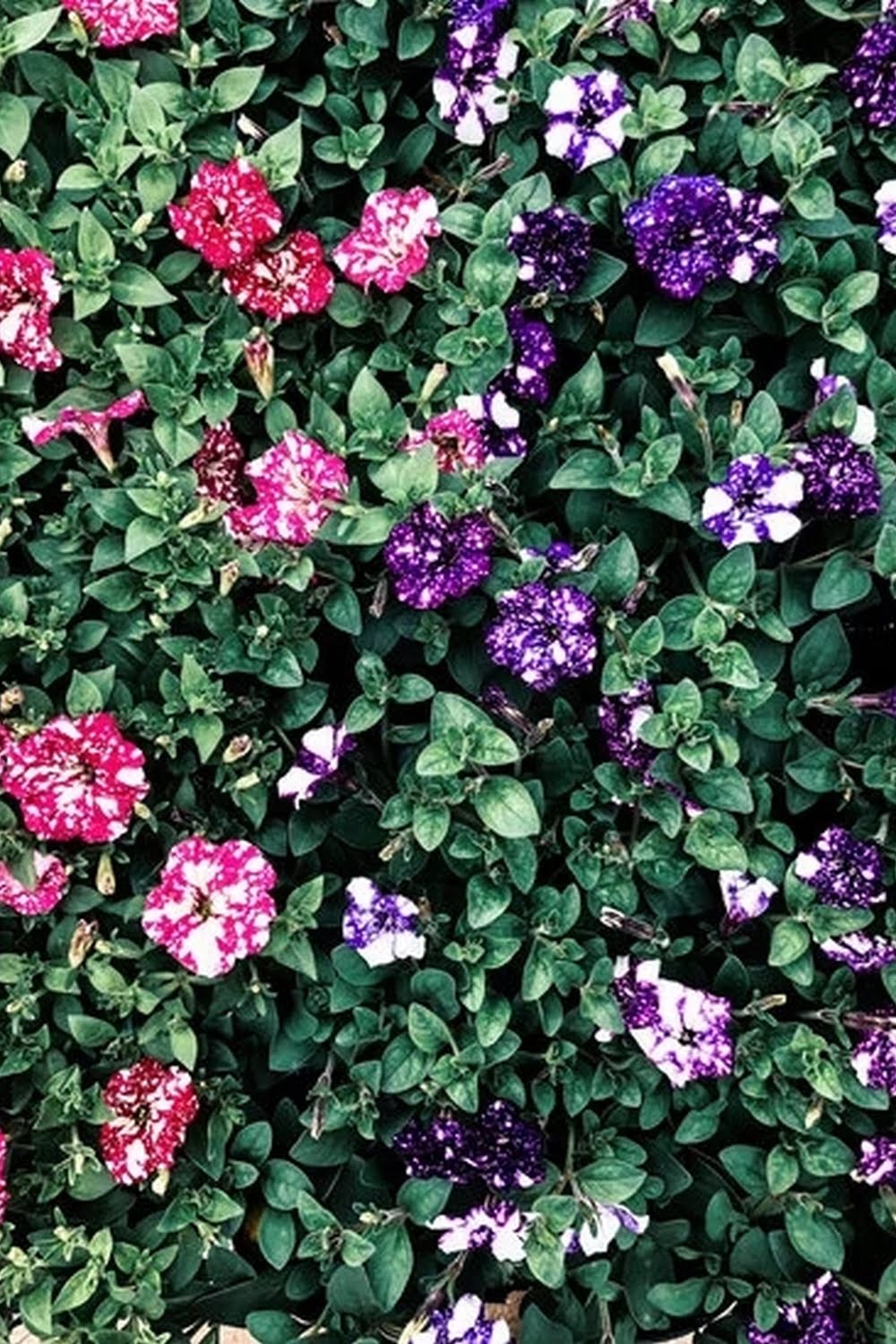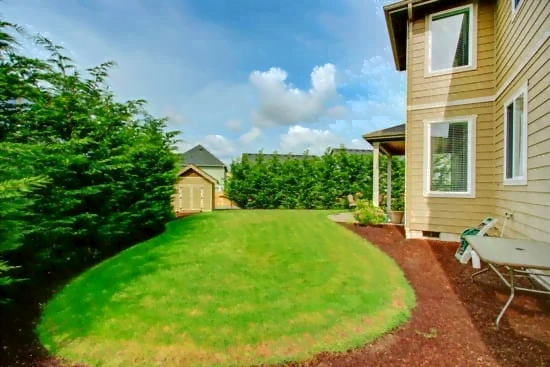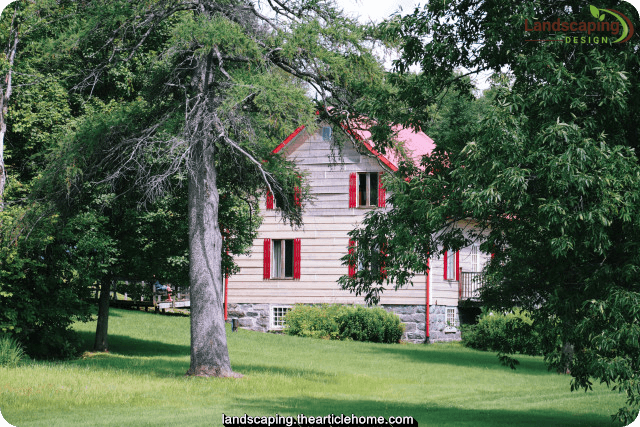
Garden fencing can serve many purposes, but one of the best is to accent and define areas of your garden. Whether you choose a six or twelve inch high border edging, or stand a section of post and rail garden fencing in the center of a sweep of lawn, garden fencing can add a beautiful accent to your landscaping.
Wood lattice makes attractive garden fencing that affords some privacy while allowing glimpses of the garden. Lattice boards set into a wooden privacy fence add a whole new design dimension to the frontage of your garden. A single width of lattice fencing can provide a screen or windbreak, and support for any climbing vines.
Set a lattice panel at the edge of the garden nearest the house and train morning glories to climb it to provide a scenery wall outside a kitchen or bedroom window, or create a simple arbor with two full height lattice panels set six to eight feet apart. Use thick garden twine to create a ‘bridge’ for vines to climb across and form a living ‘roof’.
Border edging is another extremely versatile garden fencing option. Think outside the perimeter. You can use wire garden fencing to create smaller accents within a garden plot, or outline one corner or end of a garden with cast iron border edging.
Cedar shakes or redwood blocks can be used to create curved borders for slightly raised garden beds, or serve as a backdrop over which to spill indigo lobelia or white alyssum. Create a zigzag border of decorative low picket garden fencing and plant zinnias or marigolds in the V-shaped ‘teeth’ for a unique look.
Garden fencing can be used to create a beautiful background for patio dining. Choose a metal trellis and install it just off the patio edge behind the table and dining set. Twine climbing roses up over it to create an accent that defines the edge of the patio and creates an elegant, tasteful accent to your patio and garden at the same time.
Wrought-iron or cast-iron fences tend to be ornate, which suits more formal, historic houses, such as Victorians, or high-end urban homes. Today, similar styles are available in powder-coated steel, anodized aluminum or composite materials that are much more affordable and easier to maintain.
Stone fences, which are the oldest known type of fencing, make great garden walls or boundary markers around traditional homes, such as Colonials and Cape Cods, when built with native stone. Dry-stacked walls stay together with the help of gravity and friction.
The picket fence, a low, decorative style used to define property rather than secure it, is a universally popular style flexible enough to work with almost any home. There are many variations on the picket fence, including the Federal style, which features scalloped pickets and decorative finials.
Building A Garden Fence
They are privacy and shelter are two important things in the garden. The latter is often a problem in gardens which are exposed to cold prevailing winds. Both these points are important not only for the gardener himself, but also for the plants in his garden.
Young growth can be severely damaged by cold winds and frequent buffeting will cause a great deal of root disturbance. Although privacy and shelter can be provided by trees and shrubs, fences also have an important part to play.
The choice of fencing must never be undertaken lightly, for serious consideration must be given to its appearance and construction.
Strength is very important. A fence is only as strong as its supports. Most fences are supplied with strong posts, usually 4-6in (10-15cm) square. Sometimes concrete posts are supplied; these are extremely strong. Strength of timber also depends on the prevention of rot, and unless cedar wood is used (except for posts), all timber should be treated with a suitable preservative.
Creosote can be used, although it should be allowed to soak into the timber for several weeks before plants are trained against it. Unless this is done, there is the danger of stem and leaf scorch and its use is not generally recommended where plants are to be grown against or near a fence. A safer treatment consists of the use of copper naphthenate preservatives such as the green, horticultural grades of Cuprinol or Solignum.
Types of fencing
The most popular types are purchased as units or panels. Usually they are from 5-6ft (1.5-1.8m) in length with heights varying from about 3-6ft ( 90cm-1.8m). A solid or close boarded fence is, as its name implies, a design which consists of upright or horizontal strips of wood, some 6in (15cm) wide and 1in (2-2.5cm) thick. The strips are nailed to two or more supporting rails at the rear of the panel. These provide complete privacy and wind protection.
Weather board fencing consists of wedge-shaped strips of wood, (1 in 2cm) in thickness at one edge, tapering to 0.5 in (1cm) at the other. Each strip overlaps the next by about 1 in(2cm). The advantage of this design is that it is virtually peep proof.
Trellis fencing is suited as a support for climbing and trailing plants. It is not a strong design but can be used to good effect for covering unsightly walls or as an additional part of a fence design. It usually consists of laths of wood 1 by 3/4in ( 2.5 by 1.5cm) thick, fastened across each other vertically and horizontally to form 6-8in (15-20cm) squares. The laths are attached to a more substantial framing of 1 or 1in (2.5 or 3cm) square timber.
One of the latest advances in fence production is the sale of kits which are so accurately machined and complete that even an unskilled person can erect panels without any trouble. With these kits have come new ideas in design, and many can be made up into contemporary designs.
This is especially useful where bold effects are required in the construction of patios. Many ultra-modern properties are being built and this advance in fence appearance will be welcomed by their owners.
Fencing can also be provided in the form of chain link or mesh netting. The best quality is heavily galvanized to withstand the rigors of the weather.
A more recent innovation is the plastic coating of chain link over the galvanized wire. Standard colors of dark green, black, white, yellow and light green can be obtained.

Welcome to my blog about home and family. This blog is a place where I will share my thoughts, ideas, and experiences related to these important topics. I am a stay-at-home mom with two young children. I hope you enjoy reading it! and may find some helpful tips and ideas that will make your home and family life even better!

